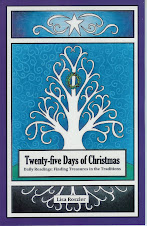HISTORY
St. Francis of Assisi is credited with giving us the first nativity scene in the year 1223 AD.
One account tells that he and his fellow monks performed a play that year for the people of a poor Italian village. The play was held in a cave and was intended to be a reminder to the villagers that Jesus was born for them, into a poor family like theirs. Another account paints the picture of St. Francis performing a nativity play himself, using small wooden pieces to represent the characters.
A lasting tradition is that St. Francis asked a man named Giovanni Vellita of the village of Greccio to create a manger scene. St. Francis performed mass in front of this early Nativity scene, which inspired awe and devotion in all who saw it.
The play became hugely popular and the creation of the figures or pastori became an entire genre of folk art.
Nativity scene figures always include Mary and Joseph. Jesus is often added on Christmas Day (or late on Christmas Eve), usually placed in a manger. Some scenes have shepherds, sheep and angels. Wise Men and their camels traditionally wait to arrive until the twelfth day after Christmas, known as Epiphany.
There are two traditions of portraying Mary:
The Western tradition says Mary was virginal and also was not subject to the curse of Eve (a Catholic teaching that her soul was pure when her body received it in her own mother’s womb). Therefore she did not suffer during labor. This is why she is depicted either seated, holding Jesus on her lap, or on her knees in adoration.
The Eastern tradition, on the other hand, emphasizes the reality of the incarnation of Jesus and his human birth: Mary, having just given birth, is pictured lying down.
INSIGHT
Mary lived far from Bethlehem, yet prophecy held that the Messiah would be born there. How did God solve the disparity? He used a Caesar to order a census. He always has a plan, though we might not always see or know it.
SUGGESTION
Display a nativity scene in your home. You could put the Wise Men in a separate room and move them closer, day by day, until Epiphany (January 6). Keep shepherds on a hillside close by, until Jesus is born. Add a little straw to the manger as the time draws near. Read Luke 2:1-19 and Matthew 2:1-11 as you move the characters.
Subscribe to:
Post Comments (Atom)



No comments:
Post a Comment